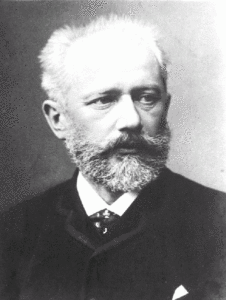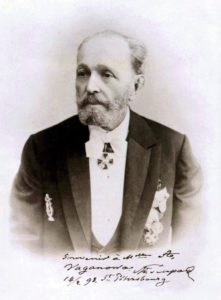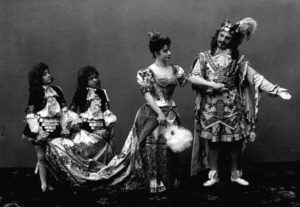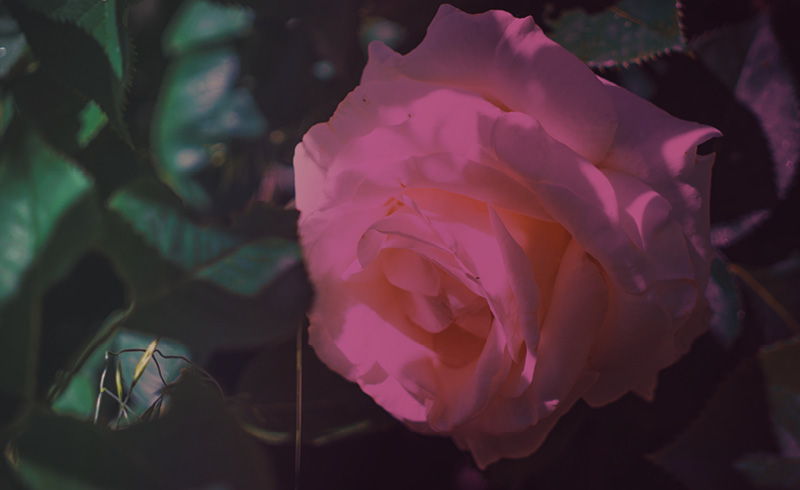“For three hours I lived in a magic dream, intoxicated by fairies and princesses, by splendid palaces, streaming with gold, by the enchantment of fairy-tale…All my being was in cadence with those rhythms, with the radiant and fresh waves of beautiful melodies, already my friends.”

Thus wrote the young artist Léon Bakst after attending the dress rehearsal of the original production of Sleeping Beauty on January 2, 1890 at St. Petersburg’s Mariinsky Theater (inspired by the performance, he would go on to be a set designer for Sergei Diaghilev’s Ballets russes in Paris). Tchaikovsky himself had written that “…the music from this ballet will be amongst my best works. The subject is so poetical, it is so suited for music, that in composing it I was utterly absorbed, and wrote with a fervour and passion which always result in work of merit.”
Ballet Takes a Step Up
That a composer of symphonies and operas would consider a ballet score his best work was remarkable for the time. Before Tchaikovsky, ballet was something of a neglected stepchild as far as the musical world was concerned. Balletmasters expected composers to create scores to order that could be cut, revised or extended at a moment’s notice during rehearsals. They would often specify the exact number of measures needed for a dance as well as the character and orchestration of the music. Furthermore, the music was expected to be simple, straightforward and formulaic so that choreography could be easily fitted to it. Needless to say, most talented composers were not attracted by the prospect of working under these conditions.

Tchaikovsky was the rare exception: a composer of genius who was also a passionate ballet lover. Indeed, his brother Modest has left us with amusing accounts of his uncanny ability to imitate the dancing of specific ballerinas (apparently he was so convincing that his friends would find themselves strangely moved by his impromptu performances). His first ballet score, Swan Lake, was first performed in 1877 by the ballet company in Imperial Russia’s second city, Moscow. While Swan Lake’s first run was not the dismal failure that it is sometimes made out to be, lackluster choreography and production values had left Tchaikovsky dissatisfied. After drastic budget cuts, Swan Lake was dropped from the Moscow Ballet’s repertory, and it only became a classic when it was revived after Tchaikovsky’s untimely death.
Sleeping Beauty would be a different story. The idea for a ballet based on Perrault’s fairy tale had come from Ivan Vsevolozhsky, the Director of Imperial Theaters himself, who was eager to produce a ballet that would “live, and stay in the repertory to enchant our grandchildren as it enchanted us.” Tchaikovsky would collaborate with Russia’s best talent, including the Mariinsky’s French balletmaster Marius Petipa. Tchaikovsky seems to have relished the close collaboration; Petipa’s daughter later recalled that “Peter Ilyich arrived at our house customarily in the evenings and played through his work in parts, and father listened and planned his dance fantasies in harmony with the music. Tchaikovsky’s arrivals always brought us much joy, especially when the inspired sounds of his music were heard in our home.”
Far from imposing burdensome limitations, Petipa’s requirements and suggestions seem to have fired Tchaikovsky’s imagination, and he (mostly) stuck to what the balletmaster asked for. Indeed, by his own estimation, Tchaikovsky finished most of the composing in only 40 days. In this Sleeping Beauty, he would bring new life, complexity and rhythmic vitality to the clichés of ballet music, reimagining them with his boundless gift for melody and the techniques of symphonic music. After Sleeping Beauty, composers began to take ballet more seriously; without Tchaikovsky’s example, the outpouring of ballet scores from composers like Stravinsky, Ravel, Prokofiev and Bartók in the early twentieth century might never have happened.
The Music
Though the score of Sleeping Beauty is still heard each year at ballet performances across the world, only a few numbers from the posthumously concocted suite are usually played in the concert hall. Andrey Boreyko, our conductor for this program, has felicitously chosen a more extensive selection of numbers from the Prologue and Acts I and II arranged to create a satisfying symphonic arc.

The excerpts begin with the introduction, which contains the two melodic ideas that recur throughout the ballet. First, we hear the music of the evil fairy Carabosse, which is contrasted with that of the good Lilac Fairy. The introduction progresses into a march, which accompanied the procession of distinguished guests who have come to celebrate Aurora’s christening. The following Scène dansante was choreographed for the corps de ballet and the good fairies who have come to bestow their blessings on the princess.
In the dramatic finale of the prologue, Carabosse curses Princess Aurora to prick her finger on a needle and die. Soon after, the Lilac Fairy saves Aurora by using her magic to alter the curse, causing her to sleep for a hundred years until awoken by the kiss of a handsome prince. Maestro Boreyko has seamlessly linked this music to the magical finale of Act I, in which the Lilac Fairy’s spell descends on the royal court, causing all to fall into a deep slumber.

The Scène that begins Act I depicts the hustle and bustle of the preparations for Aurora’s 20th birthday, but also includes an intense scene in which some peasants are caught with a needle near the palace. The king delivers a harsh punishment, but the visiting princes who have come to seek Aurora’s hand in marriage implore him to be lenient. The waltz (made famous in Disney’s adaptation of Sleeping Beauty) ensues as peasants celebrate Aurora’s birthday with dance.
We then hear a brief, scherzando coda from Act II which serves as a transition to the Entr’acte. This music was intended to be played during the Act II scene change, but was unfortunately cut from the original production. Its slow, gentle music features a virtuoso part for solo violin. We then hear the end of Act II, in which the prince discovers the castle and wakes the princess with a kiss (a chaste one on the forehead in the original production), awakening the court to general rejoicing.
Our conductor has chosen to end these selections with one of the ballet’s most celebrated numbers, the Rose Adagio. Introduced by a harp cadenza, its beautiful melodies accompany Princess Aurora in Act I as her suitors present her with roses:
—Calvin Dotsey
Don’t miss selections from Tchaikovsky’s Sleeping Beauty April 6, 7 & 8, 2018! Get tickets and more information at houstonsymphony.org.



